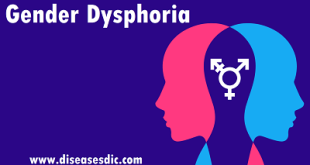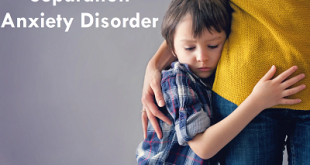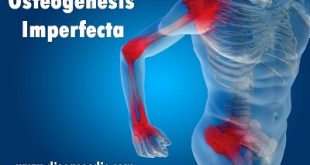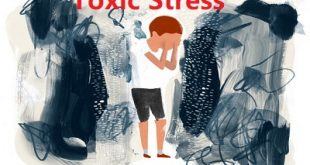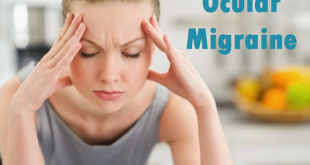Definition
Obsessive Compulsive Disorder (OCD) involves unwanted and disturbing thoughts, images, or urges (obsessions) that intrude into a child/teen’s mind and cause a great deal of anxiety or discomfort, which the child/teen then tries to reduce by engaging in repetitive behaviors or mental acts (compulsions).
As its name suggests, obsessive-compulsive disorder is made up of two parts: obsessions and compulsions. Obsessions are unwanted and distressing thoughts, ideas, images, or impulses that happen over and over again. Compulsions are the behaviors, rituals, or mental acts that you do to ease the anxiety caused by the obsessions. For example, you are always worried that you’ll forget to turn off all the appliances before you leave the house so you check all of them over and over before you leave. You might worry that if you forget to turn off an appliance, the house will catch on fire. Your worry is the obsession and repeatedly checking the appliances is the compulsion.
Epidemiology
The lifetime prevalence of OCD is 2.3%, although this may be an underrepresentation because often only patients with moderate to severe symptoms seek help. The mean age of onset is 19.5 years, and it is rare for new cases of OCD to develop after the early 30s. A subset of patients, mostly males, have an early onset (before 10 years of age). The lifetime risk of developing OCD is higher in females, who typically develop the disorder in adolescence.
Most people with OCD fall into one of the following categories:
- Washers are afraid of contamination. They usually have a cleaning or hand-washing compulsions.
- Checkers repeatedly check things (oven turned off, door locked, etc.) that they associate with harm or danger.
- Doubters and sinners are afraid that if everything isn’t perfect or done just right something terrible will happen, or they will be punished.
- Counters and arrangers are obsessed with order and symmetry. They may have superstitions about certain numbers, colors, or arrangements.
Types of Obsessive Compulsive Disorder
All forms of OCD are similar in that a trigger occurs, causing intrusive thoughts, which then cause distress and anxiety and ultimately lead to compulsive behavior. Both OCD obsessions and compulsions can have either physical or emotional symptoms.
There are several categories of OCD that are not listed such as relationship OCD, pedophilia OCD, and sexual orientation OCD, but the following four stand out as they’re some of the more commonly seen types.
Cleaning/contamination OCD
People who have a cleaning or contamination OCD tend to focus on fear or intense feelings of discomfort that results from contamination or uncleanliness. Washing excessively is normal and is done in an attempt to relieve feelings of distress.
A good example of contamination OCD is touching a light switch and convincing yourself that it was dirty and that you’re now contaminated. You may fear that you’ll contaminate others which may lead to the repetitive behavior of frequently washing your hands to try and cleanse yourself.
Order/symmetry or counting compulsions OCD
Order and symmetry and counting compulsions OCD creates a very intense urge to arrange and rearrange things until they’re just right — or at least exactly how you think they should be. In some cases, this compulsive behavior could look like a need to constantly rearrange the socks in your drawer to be organized by color or by type.
This subtype might also make you count or say phrases or words over and over again until you feel something is done perfectly. Sometimes the need to order, count, or repeat can be an attempt to stave off danger or bad luck. You may feel like if you get something perfectly arranged, or if you say a certain phrase so many times, perhaps someone won’t die, or they won’t leave you.
Harm OCD
Harm OCD involves extreme feelings or worry that you’ll harm yourself or others. In order to relieve these unwanted thoughts, you might use what’s known as checking rituals.
An example of harm OCD is you may believe that you accidentally hit someone with your car. You can feel so strongly about this that you’ll be compelled to drive back to the place where you thought the accident occurred to prove to yourself nothing happened. You’ll likely do this repeatedly in an attempt to be absolutely sure.
Hoarding OCD
Hoarding OCD is now actually recognized as its own diagnosis in the DSM-5. When someone hoards, they collect items that typically don’t have much value. Magazines, notes, clothing, games, containers — a hoarder may keep so many of these items, their home becomes virtually unlivable as it’s so filled with clutter.
An obsessive thought surrounding not having something you might one day need is common with hoarding. This OCD subtype has a higher rate of co-existing depression and anxiety than others.
Note that hoarding OCD is a separate condition from compulsive hoarding and can occur on its own without a distinct OCD diagnosis.
In addition to these main subtypes, there are also obsessive-compulsive-related disorders that can occur.
- Hair-pulling disorder (trichotillomania) — Hair pulling disorder causes a strong urge to pull hair from the head, eyelashes, eyebrows, or anywhere else on your body. Habit reversal training or cognitive behavioral therapy (CBT) are often successful treatment options.
- Skin picking disorder (excoriation) — Excoriation disorder causes persistent picking of the skin. It can cause infections, lesions, and extreme distress.
- Body dysmorphic disorder — Body dysmorphic disorder involves a preoccupation with what you may perceive as a flaw in your own appearance. Most often, the imperfections you see either aren’t observable at all, or they’re only very slightly observed to others. Body dysmorphic disorder causes repetitive behavior to check your appearance or groom yourself. It also typically involves comparing yourself to others.
Causes of Obsessive Compulsive Disorder
There are many factors that affect whether OCD develops.
- Genes – OCD is a complex disorder. Studies have shown that there are different genetic risk factors involved in whether someone develops OCD. People who have a relative with OCD are more likely to develop OCD than people who don’t.
- Stress – Stressful life events bring it on in about one or two out of every three cases.
- Life changes – Times where someone suddenly has to take on more responsibility – for example, puberty, the birth of a child or a new job9.
- Brain changes – We don’t know if it’s a cause, or the result of OCD – but if you have the symptoms for more than a short time, researchers think that there may be changes in how a chemical called serotonin (also known as 5HT) works in the brain10.
- Personality – If you are a neat, meticulous, methodical person with high standards you may be more likely to develop OCD. These qualities are normally helpful but can slip into OCD if they become too extreme.
- Ways of thinking – Nearly all of us have odd or distressing thoughts or pictures in our minds at times – “what if I stepped out in front of that car?” or “I might harm my child”. Most of us quickly dismiss these ideas and get on with our lives. But, if you have particularly high standards of morality and responsibility, you may feel that it’s terrible to even have these thoughts. So, you are more likely to watch out for them coming back – which makes it more likely that they will.
Symptoms of Obsessive Compulsive Disorder
People with OCD have repeated thoughts, urges, or mental images that cause anxiety. These are called obsessions.
Examples are:
- Excessive fear of germs
- Forbidden thoughts related to sex, religion, or harm to others or self
- Need for order
They also perform repetitive behaviors in response to their thoughts or obsessions. Examples include:
- Checking and rechecking actions (such as turning out the lights and locking the door)
- Excessive counting
- Ordering things in a certain way
- Repeatedly washing the hands to ward off infection
- Repeating words silently
- Praying silently over and over
Not everyone who has habits or rituals they like to perform has OCD. But, the person with OCD:
- Is not able to control their thoughts or behaviors, even when they understand that they are excessive.
- Spends at least an hour a day on these thoughts or behaviors.
- Does not get pleasure from performing a behavior or ritual, other than perhaps brief relief of anxiety.
- Has major problems in daily life due to these thoughts and rituals.
People with OCD may also have a tic disorder, such as:
- Eye blinking
- Facial grimacing
- Shoulder shrugging
- Head jerking
- Repeated clearing of the throat, sniffing, or grunting sounds
Symptoms of OCD
Risk factors
- Personal history of childhood trauma, such as physical or sexual abuse
- Family history of mental illness
- Inhibited behavior
- Negative thoughts and emotions
- History of internalizing or hiding emotions
Effects of OCD
While OCD is a treatable mental disorder, many people do not receive the proper diagnosis or seek treatment for the disease. Long-term effects of untreated OCD are related to co-occurring disorders, genetic influences, stress, and symptom severity and may include the following:
- Inability to attend work, school, or social activities
- Poor interpersonal relationships
- Social isolation
- Difficulties holding down a job
- Unstable finances
- The poor overall quality of life
- Contact dermatitis from skin washing
- Hoarding
- Substance abuse
- Suicidal thoughts and behaviors
Diagnosis of Obsessive Compulsive Disorder
Many people may describe their behavior as “compulsive. This includes things like high standards of performance, perfectionism, and organization in work and recreational activities. These habits can help people reach success and feel more organized. OCD compulsions are very distressing and interfere with daily function. These are issues you should discuss with your doctor.
Diagnosis of OCD is usually based on the following:
Initial Assessment
Your doctor will ask you about your symptoms and past health. You may be asked questions or given a questionnaire to fill out. OCD may be diagnosed if certain symptoms affect you for at least 1 hour each day and/or causes both emotional distress and disturbed functioning. The doctor will also rule out other possible causes such as medicine, drug abuse, or other medical problem. Most people are aware that the behaviors are excessive or unreasonable. This is important for the doctor to know.
Evaluation of Other Mental and Neurologic Disorders
Other mental health issues may be linked to and worsened by OCD. The doctor may look for signs of other issues such as:
- Depression
- Generalized anxiety disorder
- Tourette syndrome (a neurologic disorder)
- Eating disorders (such as anorexia and bulimia)
- Attention-deficit hyperactivity disorder (ADHD)
- Personality disorders
Obsessive Compulsive Disorder Treatment
Treatment of OCD involves two major components – psychological therapy and medication. Alone, each form of treatment is effective for 70% of those who have OCD. Used in combination, they will help 80–90% of people with OCD.
Medication
Medicines are most often used for making your mood more stable and for helping with depression (anti-depressants).
If you are prescribed medication, you’re entitled to know the names of the medicines; what symptoms they are supposed to treat; how long it will be before they take effect; how long you will have to take them and understand the side effects.
Finding the right medication can be a matter of trial and error. There is no way to predict exactly how medicines will affect you. So be patient until you find the right medication for yourself.
If you’re pregnant or breastfeeding no medication is entirely safe. Before making any decisions about taking medication during pregnancy you should talk with your doctor.
Talking therapies and counseling (psychological treatments)
Talking therapies are effective in the treatment of OCD, especially for the treatment of depressive symptoms. Sessions may be held on a one-to-one basis, sometimes include partners or family, or be held in a group.
The focus of psychological therapy or counseling is on education and support for you to understand what is happening to you, learn coping strategies, and pursue a path of recovery and coping. Sessions help you regain the confidence and belief in yourself that is critical to recovery.
All types of therapy/counseling should be provided in a manner that is respectful to you and with which you feel comfortable and free to ask questions.
It should be consistent with and incorporate your cultural beliefs and practices.
Psychoeducation (providing education)
Education about OCD can be extremely important to help you, your family, and your supporters. Your health professional should give you information about your condition. They should suggest different ways to handle it and discuss any complications which could occur.
Complementary therapies
The term complementary therapy is generally used to indicate therapies and treatments that differ from conventional western medicine and that may be used to complement and support it.
Certain complementary therapies may enhance your life and help you to maintain well-being. In general, mindfulness, hypnotherapy, yoga, exercise, relaxation, massage, mirimiri, and aromatherapy have all been shown to have some effect in alleviating mental distress.
When considering taking any supplement, herbal or medicinal preparation you should consult your doctor to make sure it is safe and will not harm your health, for example, by interacting with any other medications.
Physical health
It’s also really important to look after your physical well-being. Make sure you get an annual check-up with your doctor. Being in good physical health will also help your mental health.
Prevention of Obsessive Compulsive Disorder
OCD & related disorders cannot be entirely prevented but definitely, the complications can be prevented and the course and outcome can be improved by adopting a healthy physical and mental lifestyle right from childhood and learning to deal with stress in a better way. It includes
- Exercising daily
- Learning problem solving
- Time management
- Learning to prioritize things in life
- Sleep hygiene
- Assertiveness training
- Eating healthy food
- Inculcating hobbies e.g. Music, Dance, Arts etc
- Investing in and nurturing the social support system.
- Having close people to talk one’s heart out.
- Providing a stable and secure home environment to kids helps make them emotionally stable and secure thus reducing vulnerability to develop OCD & related disorders.
- The awareness of OCD & related disorders is vital as it leads to early recognition and treatment thus preventing further complications and improving the outcome.
So to prevent further worsening and to have a better treatment response there is a need to identify the problem at an early stage. It can be done through
- Sensitizing the community regarding the importance of mental health.
- Stressing the fact that mental health is as vital to a human being as physical health.
- Reducing the stigma attached to being a mentally ill patient, can be done through community participation and awareness programs.
- As caretakers and patients, one can minimize the further worsening and complications by ensuring compliance with treatment and regular participation in it.
 Diseases Treatments Dictionary This is complete solution to read all diseases treatments Which covers Prevention, Causes, Symptoms, Medical Terms, Drugs, Prescription, Natural Remedies with cures and Treatments. Most of the common diseases were listed in names, split with categories.
Diseases Treatments Dictionary This is complete solution to read all diseases treatments Which covers Prevention, Causes, Symptoms, Medical Terms, Drugs, Prescription, Natural Remedies with cures and Treatments. Most of the common diseases were listed in names, split with categories.

